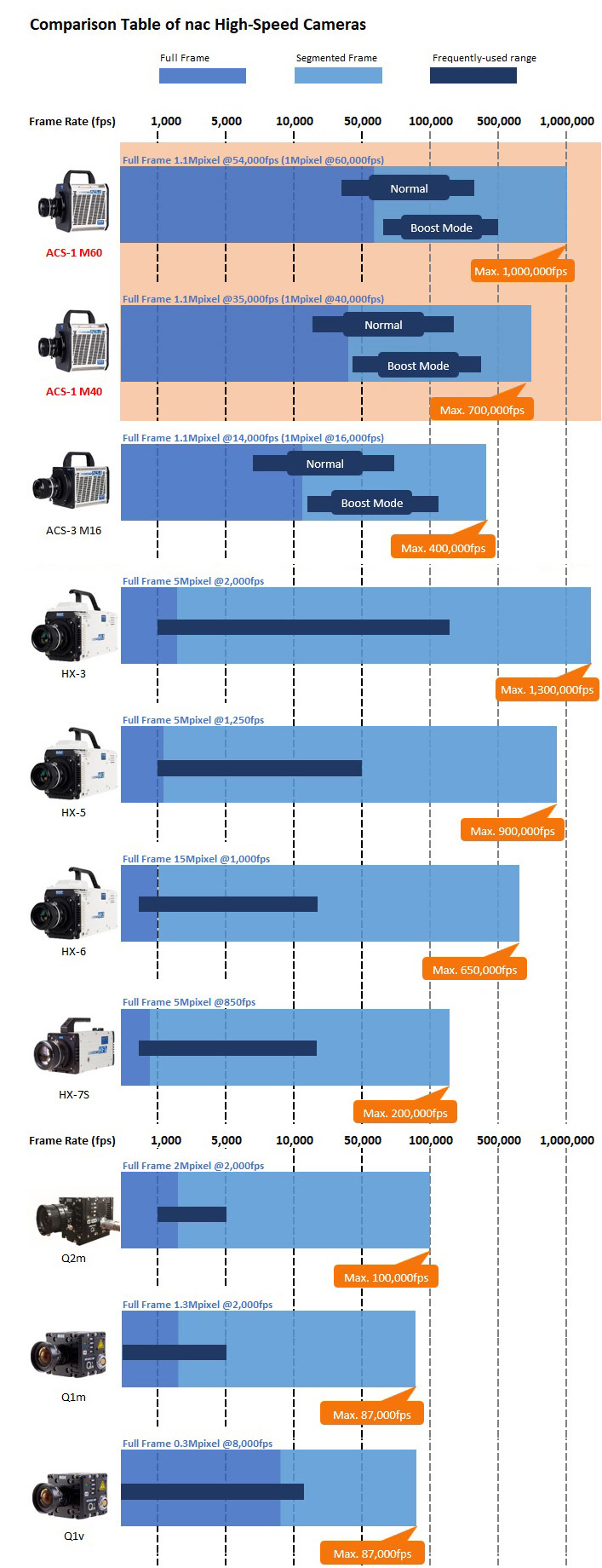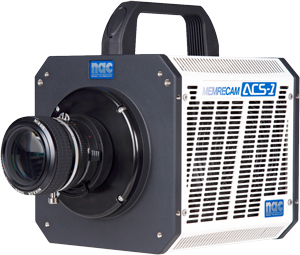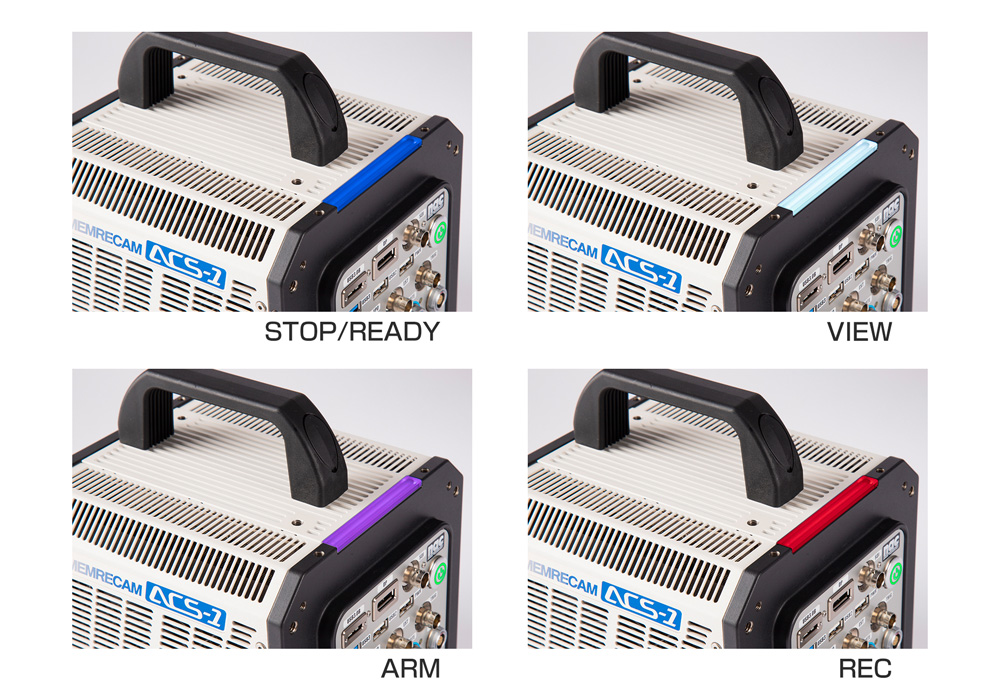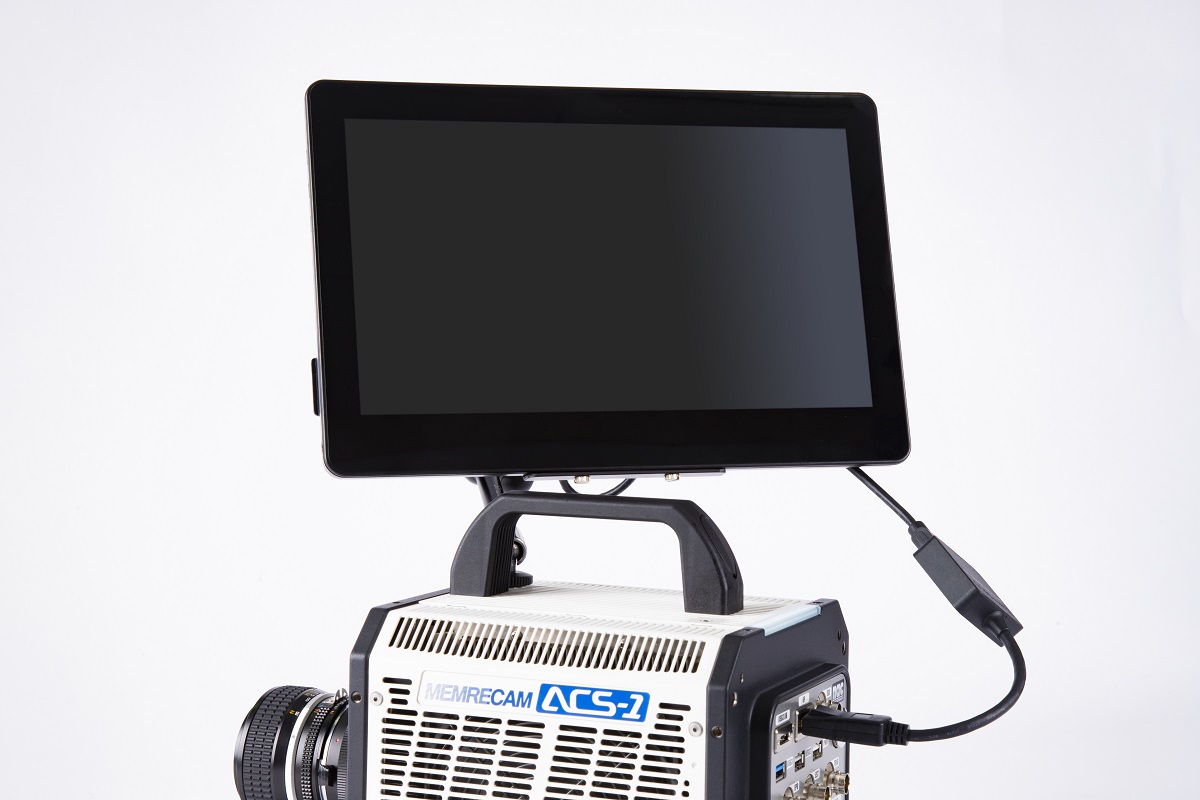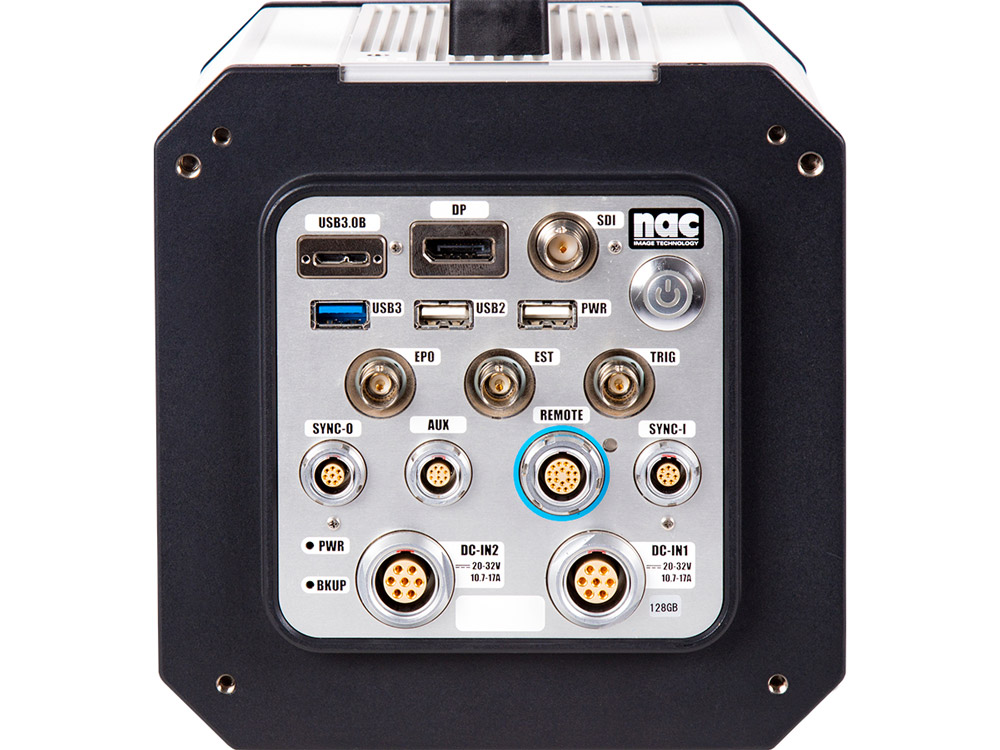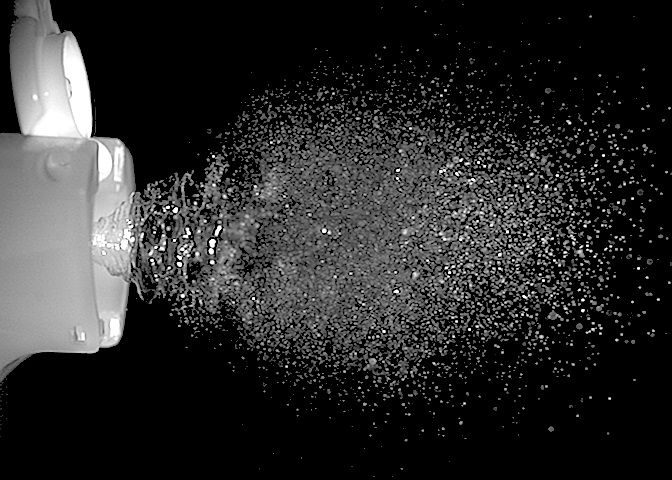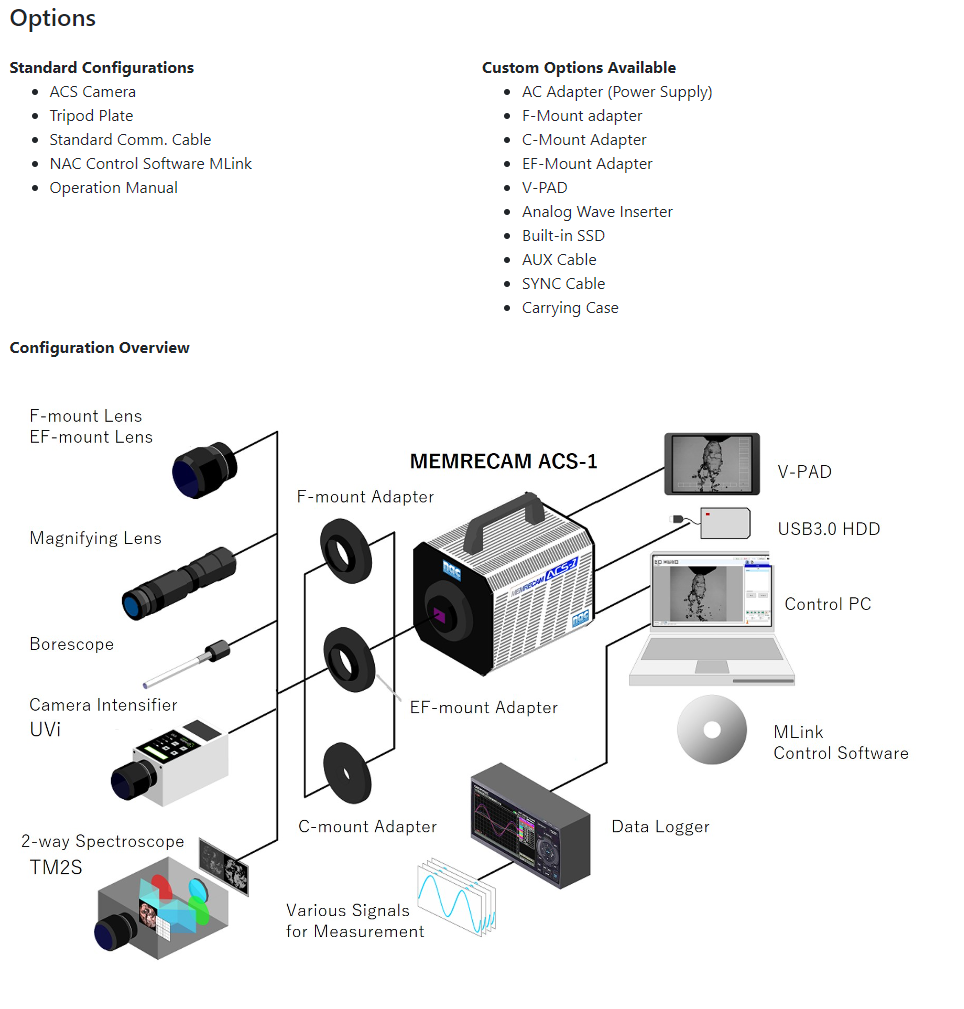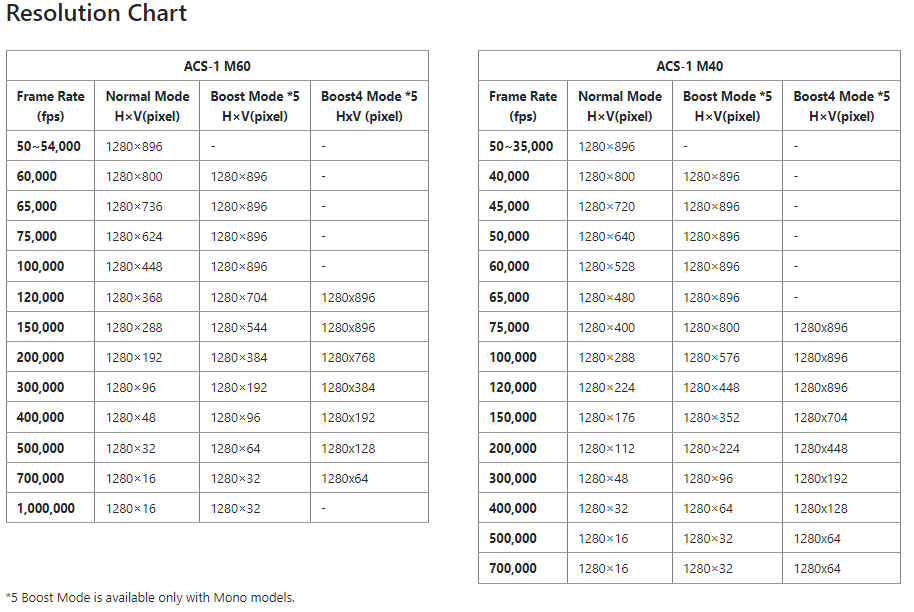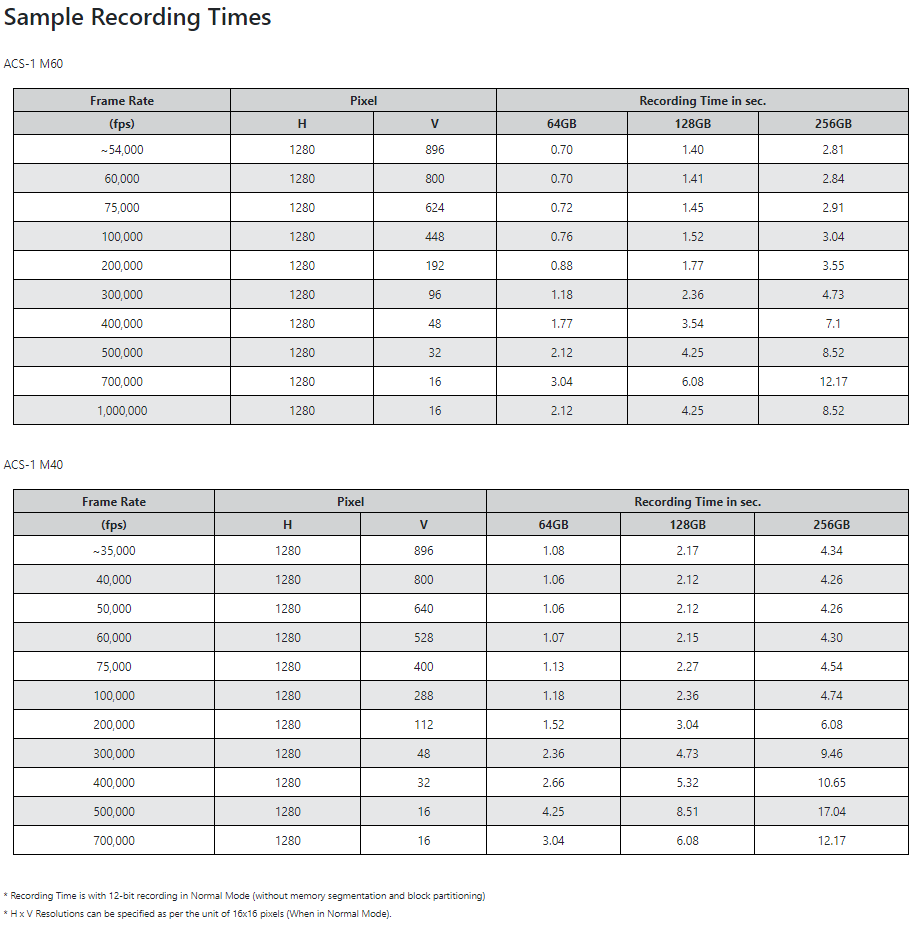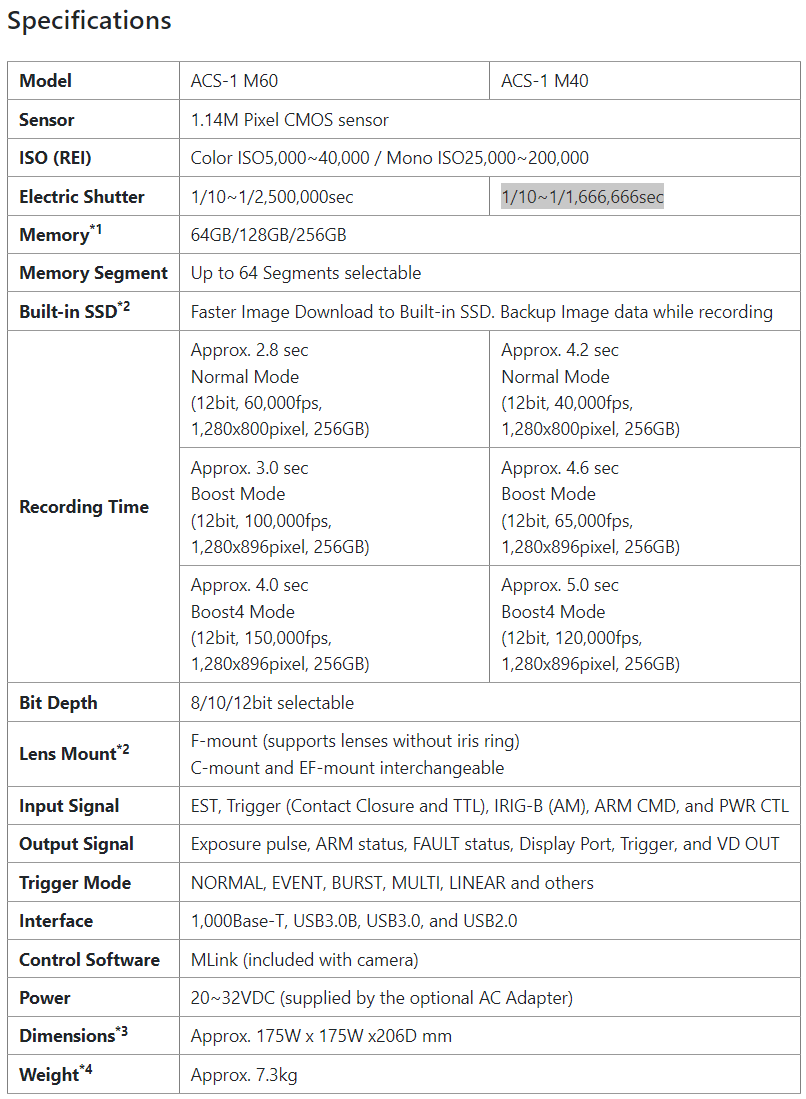Downloads
High Speed and High Resolution
The ACS-1 M40 provides a complete screen resolution of 1280 x 896 and reaches a maximum of 35,000 fps, alongside a resolution of 1280 x 800 with 40,000 fps. Under standard mode, it can achieve a resolution of 1280 x 400 with a maximum frame rate of 75,000 fps.
At lower resolutions, speeds of up to 700,000 fps can be obtained.
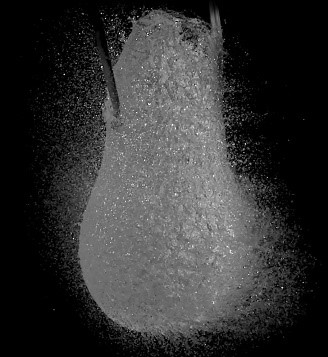
Boost Mode/Boost4 Mode
The Boost mode *1 merges nac’s one-of-a-kind sensing technology with an exclusive signal processing method to boost frame rate and resolution with little or no reduction in image quality. This potent tool is suitable for applications calling for higher frame rates and superior resolutions.
*1 Currently, Boost mode is only accessible for monochrome models.
Increasing the frame rate
@1280 x 896 pixels
Normal Mode: 35,000fps -> Boost-Mode: 65,000fps -> Boost4 Mode: 120,000fps
Increasing the resolution
@150,000 fps
Normal Mode: 1280×176 pixels ->Boost-Mode: 1280×352 pixels -> Boost4 Mode: 1280×704 pixels
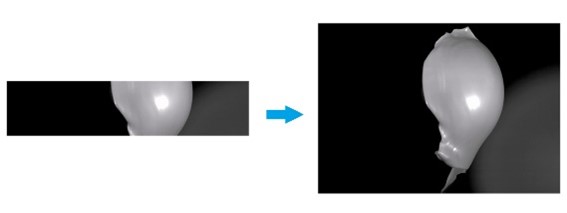
Example of boost mode: Both images were taken at the same frame rate (left: normal mode, right: boost mode)
High light sensitivity ISO 100,000
All High-Speed cameras in the ACS series showcase cutting-edge CMOS sensors renowned for their exceptional light sensitivity (monochrome ISO 100,000). Despite challenging lighting conditions, the ACS provides lucid, dynamic, and crystal-clear images. These features make the ACS-1 M40 an ideal fit for high magnification and microscopy applications without the prerequisite for intense illumination on delicate subjects.


Conventional Model ACS-1
Image Trigger
The Image Trigger is a distinctive function that triggers the High-Speed Camera automatically. It achieves this by detecting minute changes in brightness within a user-defined area of interest (AOI) on the live image. The feature enables the user to activate the ACS camera by sensing alterations occasioned by movement or variations in light intensity where a conventional trigger signal is absent. Unlike most image-based triggers, where changes in brightness must be detected across the field of view to trigger an event, this feature stands out due to its unique ability.
By utilising ACS, users can establish a trigger AOI of just 21 x 16 pixels encompassing the entire image. This feature enhances image triggering accuracy, enabling the capture of obscure events where even the smallest alterations can be identified and recorded.
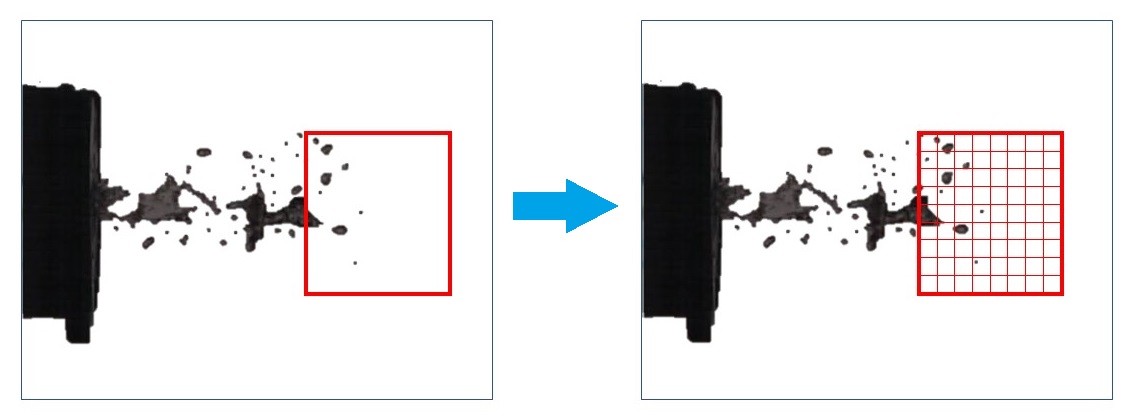
Large storage capacity and storage segmentation
The ACS-1 has a capacity of up to 256GB of inbuilt DRAM, significantly extending recording durations compared to other conventional high-speed cameras. Additionally, it offers an optional one terabyte (1 TB) inbuilt SSD storage drive permitting swift and seamless transfer of raw image data directly from camera memory to mass storage media.
Memory segmentation functionality is also available, granting its users the freedom to partition the available memory into numerous shorter segments. This feature enables the user to make multiple recordings in quick succession without first downloading the images to a computer. After all memory segments are captured, the user has the option to choose which segments to download.
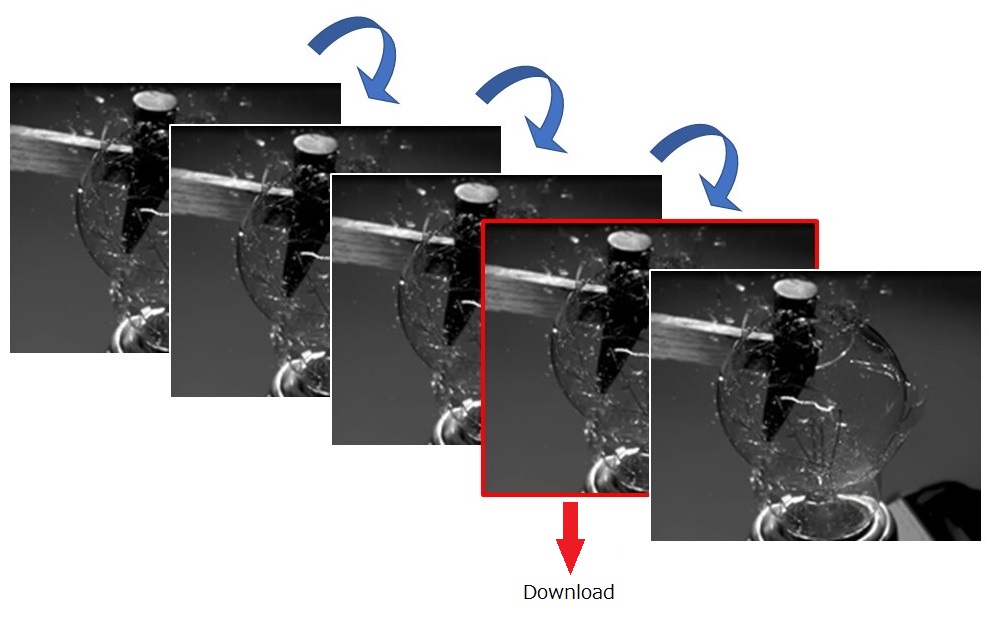
Easy synchronisation of multiple cameras
With two SYNC IN and SYNC OUT connectors located at the back, the ACS provides highly convenient and accurate camera synchronisation. ACS cameras can also be synchronised via a single cable without requiring trigger distribution boxes or external sync devices.
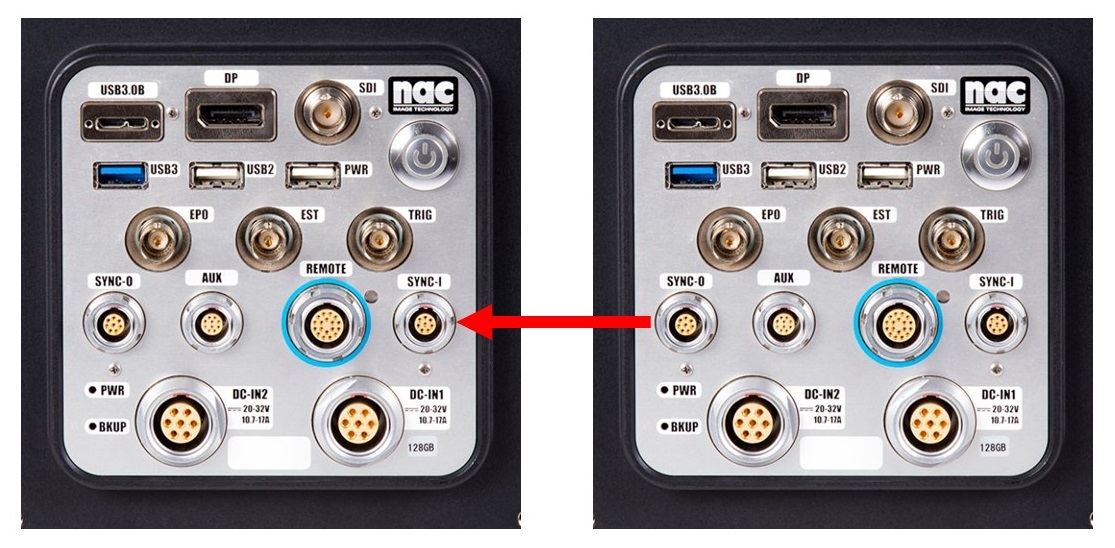
Superfast download speed with USB3.0B
The ACS offers fast image download through an industry-standard USB3.0 Micro-B connector. With download speeds exceeding 325 MB/second *2, large image sequences can be downloaded in seconds. The ACS’s DOWNLOAD REC function enables users to capture images while transferring previously captured data to a PC or SSD in the background, resulting in a more efficient workflow. Images can be directly downloaded to an external, connected USB3.0 (or USB2.0) device without the necessity of a PC. *3
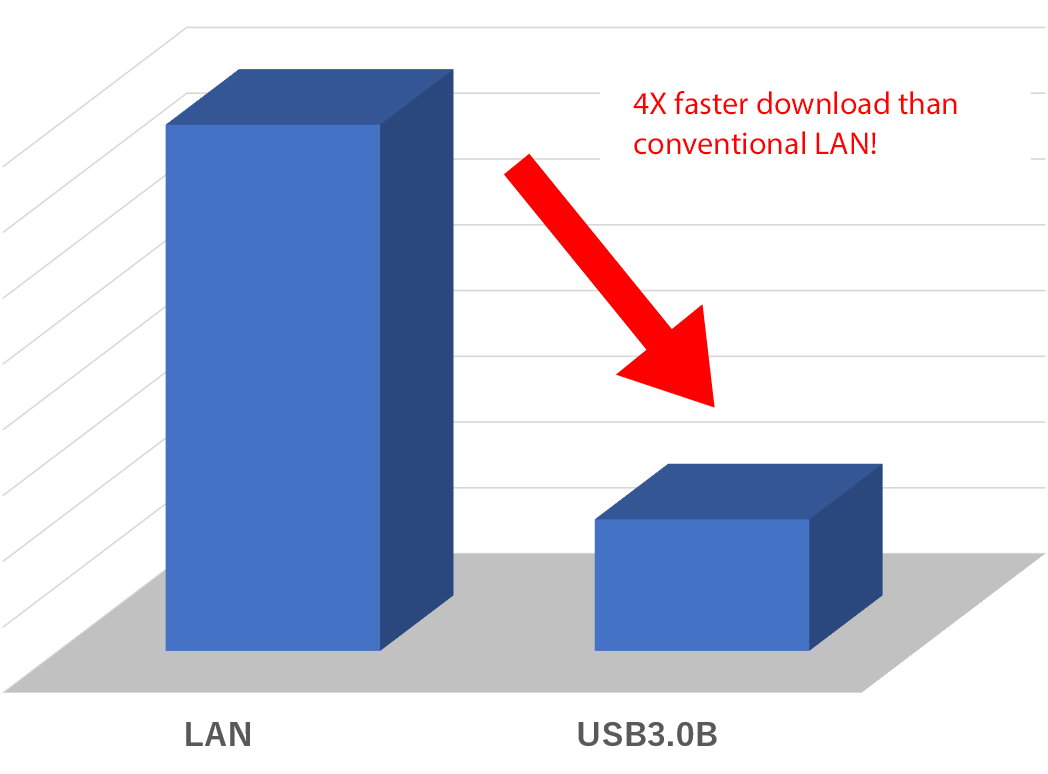
*2: Download rates depend on PC performance.
*3: An optional V-PAD is required to transfer the data without a PC.
V-PAD touch screen monitor for ACS series
No PC, no problem! Using the ACS Series V-PAD allows for exquisite HD viewing and complete touchscreen control of the camera without a computer. Whether on location or in a restricted area where computer supervision is ineffectual, the V-PAD allows for full management of the ACS camera from set-up, recording, to reviewing and storing. All from a user-friendly touchscreen interface.
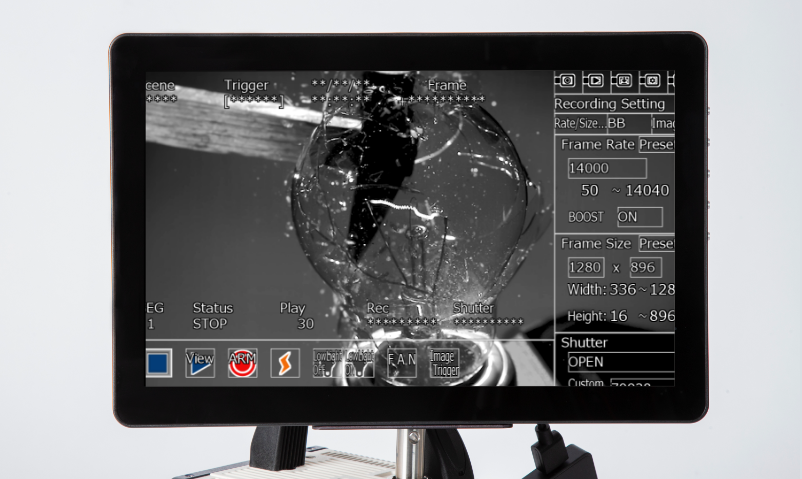
NAC High Speed Camera Comparison Table
